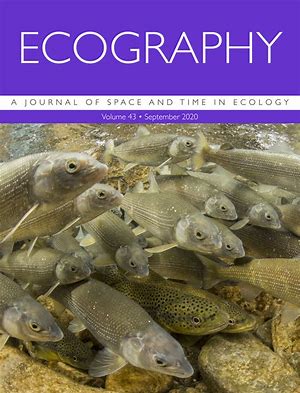- Programme area:Aquatic Biodiversity in the Anthropocene
Effects of food provisioning on the daily ration and dive site use of Great Hammerhead Sharks, Sphyrna mokarran
The study provides insights into how large-bodied marine predators react toward wildlife tourism associated provisioning and allows further discussion about daily energy uptake during provisioning dives, its potential impacts on the ecological role of the target species and associated management measures.
Viewing emerging human infectious epidemics through the lens of invasion biology
A research team has studied the close relationships between infectious diseases and biological invasions. The "One Health" approach considers the health of humans as well as animals, plants and other elements of the environment to prevent pandemics and the spread of invasive alien species.

Four priority areas to advance invasion science in the face of rapid environmental change
Invasion science is the systematic investigation of the causes and consequences of biological invasions. The authors identified four priority areas to advance the field in the Anthropocene: (1) predicting impacts of biological invasions, (2) understanding synergisms of multiple environmental stressors, (3) resolving the taxonomic impediment, and (4) enhancing international biosecurity.
Improving the reliability of eDNA data interpretation
Molecular survey methods detecting DNA released by target-species into their environment (eDNA) provide cost-effective tools for conservation, yet such eDNA-based methods are prone to errors. The authors synthesized recent advances in data processing tools that increase the reliability of interpretations drawn from eDNA data.
Variation of bacterial communities along the vertical gradient in Lake Issyk Kul, Kyrgyzstan
Diversity and community composition of bacteria along vertical gradients were studied in Lake Issyk Kul, Kyrgyzstan, the 6th deepest lake worldwide and the largest high-altitude lake. In the molecular assessment, the 16S rRNA gene analysis revealed significant changes in the composition, responding mainly to depth and salinity with Planctomycetes and Chloroflexi dominating in the deepest layers.
What factors increase the vulnerability of native birds to the impacts of alien birds?
Alien birds can have severe impacts on native birds. The authors wanted to find out whether there are certain factors that make some native bird species more vulnerable to such impacts than others. They identified several factors that increase vulnerability, as well as specific orders of native birds that may require protection, and locations where impacts may be particularly damaging.
Distance to native climatic niche margins explains establishment success of alien mammals
Using a dataset of 979 introductions of 173 mammal species worldwide, the authors investigated the hypothesis that the establishment success of alien species depends on the match between environmental conditions in the exotic and native range. The study results support this hypothesis. They are based on the Niche Margin Index, which is presented as a new analysis tool in the paper.
The Hierarchy-of-Hypotheses approach: a synthesis method for enhancing theory development in ecology and evolution
In the current era of Big Data, synthesis tools are critical means to handle the deluge of information. The hierarchy-of-hypotheses (HoH) approach is such a tool that helps to (a) organize evidence, (b) organize theory and (c) closely connect evidence to theory. In this paper, the authors outline the HoH approach and offer guidance on how to apply it, using examples from ecology and evolution.
Combined effects of life‐history traits and human impact on extinction risk of freshwater megafauna
Freshwater megafauna are vulnerable to extinction, with over 50% of all classified species considered as threatened on the IUCN Red List. The authors found that human impact and traits related to species’ recovery potential including life span, age at maturity, and fecundity jointly determine their extinction risk. In addition, 17 out of 49 unclassified species were predicted to be threatened.
Safeguarding freshwater life beyond 2020: recommendations for the new global biodiversity framework from the European experience
The year 2020 marked the end of the "UN Decade of Biodiversity". However, the final UN report showed that none of the 20 Aichi-Biodiversity Targets, agreed in 2010, have been achieved. Recognizing the perilous state of freshwater biodiversity, a research team led by IGB has issued 14 recommendations for political follow-up agreements on the protection of biological diversity.










